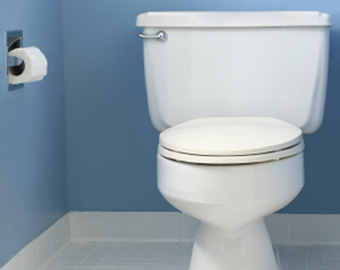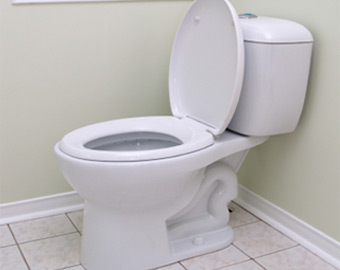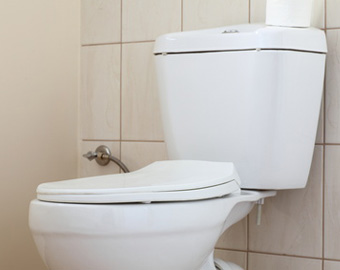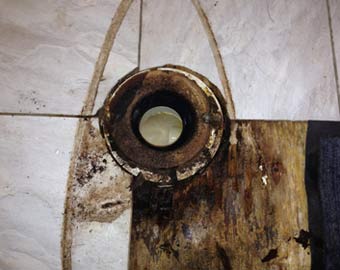
The flush toilet is an essential part of modern day living that many people simply don't think about very much, until the toilet develops some sort of a problem. Although toilets are low-tech and don't have any electronic parts, the flushing mechanism, seals, and pipes can all develop problems.
Sometimes these problems develop with little or no warning, which can be a frustrating experience for any homeowner. Knowing how to fix minor toilet leaks and other common problems in a toilet can save you time and money and give you the satisfaction of doing it yourself.
The Parts of a Toilet
Most of the toilet's parts are contained within the tank. These parts include:
- Flush valve
- Flapper
- Overfill tube
- Float
- Float arm
- Fill tube
- Adjustment screw
- Fill valve
- Chain
- Handle
- Handle arm
The other parts of a toilet include the tank, bowl, water supply line, wax ring, seal, bolts, and flange.
Typical Toilet Problems

There are many common problems that a toilet can develop. Some of these result from misuse or abuse of the toilet, while others are simply an effect of wear and tear on the mechanical parts.
Running toilet: This is a typical malfunction that results from wearing out of the parts in the toilet tank.
Toilet clogs: Toilets can clog due to flushing something that is too big or something that shouldn't be flushed, such as a wad of paper towels. Clogs can also happen due to mineral, hair, or waste buildup within the pipes.
Leaks: Toilet leaks are among the most common problems with toilets and often result from parts wearing out.
How to Fix a Toilet Leak

As much as 80,000 gallons of water can be wasted from a leaking toilet each year. That amount of wasted water has a significant impact on your utility bill and it impacts the environment as well. Fixing a toilet leak could save you hundreds of dollars over the course of a year.
- Begin by troubleshooting where the leak is coming from, beginning with the toilet tank.
- For leaks within the tank, first check the flush valve. Make sure it's seated properly. If it's not, the toilet will continue to run. Turn off the water to the toilet. Bend the float arm or adjust the float chain to make sure that the tank fills up to the water level mark indicated on the tank's wall, which is usually about three-quarters of the way up the tank.
- Next, check the float. If the float is full of water, it will make the toilet continue to run. A waterlogged float needs to be replaced.
- Replace the rubber flapper if it is not closing properly.
- Reposition the refill tube.
If you don't find the leak within the tank, check around the base of the toilet. You will need to remove the toilet from its base, beginning with the tank. First, remove all the water from the tank and the bowl. Do this by shutting off the water supply and then flushing the toilet. You'll need to bail out any remaining water by hand or with a siphon. Disconnect the water supply line.

A do-it-yourself toilet installation can be dangerous, and may lead to floor, tile, and water damage- and maybe even damage to the toilet itself.
Use a wrench to loosen the nuts and bolts that hold the toilet into place. Lift the base of the toilet away from the floor. Set it in the shower or bathtub so any water can safely drain. Clean the flange seal and inspect it for tears. If it's worn out, replace it. Check the wax ring. if it is worn, torn or corroded, replace it. If the pipe that drains the water is cracked or obstructed, it may need to be replaced. This is a job for a professional.
If the toilet still leaks despite your best efforts to repair it, a call to a professional plumber is in order. Trying to do a complex repair yourself could cause more damage to the toilet or bathroom due to inexperience. Professional plumbers have the experience and tools to fix any toilet problems with a minimum of hassle, fuss, and mess. In addition, you may want to consider the option of buying a new toilet and in the process upgrading to a better, more modern toilet.